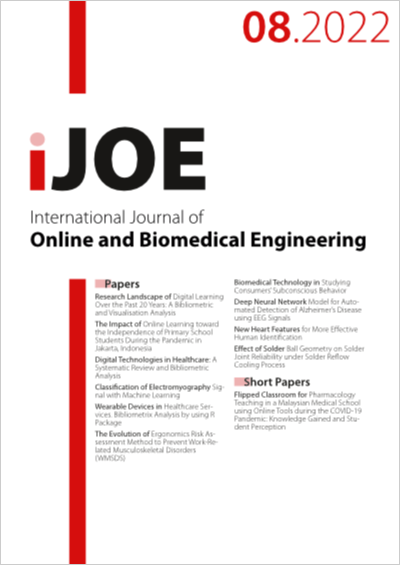Flipped Classroom for Pharmacology Teaching in a Malaysian Medical School using Online Tools during the COVID-19 Pandemic: Knowledge Gained and Student Perception
DOI:
https://doi.org/10.3991/ijoe.v18i08.31783Keywords:
Flipped classroom, Pharmacology, Medical school, Online toolsAbstract
Introduction: The usage of a flipped classroom to instruct medical students is becoming more common. During the COVID-19 epidemic, this method of teaching and learning proved to be effective. This study aims to analyse the knowledge gained and perceptions of medical students who were taught pharmacology in a flipped classroom utilising online tools.
Methodology: A total of 50 second-year medical students took part in the research. Local anaesthetics and adverse drug reactions were the two topics covered in the flipped classroom. A few weeks before the session, pre-reading materials were distributed, which included voice-over PowerPoint videos and AMBOSS links. Students were given pre and post-tests using Microsoft forms to assess their knowledge gained during the face-to-face session. Higher-order thinking questions were uploaded as a Kahoot session, and the questions were also posted using Microsoft PowerPoint in an interactive session. A validated questionnaire was used to collect feedback, and the responses were graded on a 4-point Likert scale. Descriptive statistics were used to analyse the data.
Results: There were 18 females and 32 males among the 50 students. The students' average age was 21.4±0.6 years. When the pre and post-test scores were compared, statistically significant results were obtained (P-value .000). The students had a favourable attitude about flipped classrooms. Most students said that the flipped classroom increased their understanding of the subject (mean score 3.760.44). They also thought the flipped classroom was a fun way to learn (mean score 3.710.47). The overall perception of the flipped classroom was excellent (53%).
Conclusion: The knowledge gained by the students during the flipped classroom session in pharmacology was significant. The students had a favourable opinion of the flipped classroom method of teaching pharmacology.
Downloads
Published
How to Cite
Issue
Section
License
Copyright (c) 2022 Heethal Jaiprakash

This work is licensed under a Creative Commons Attribution 4.0 International License.


